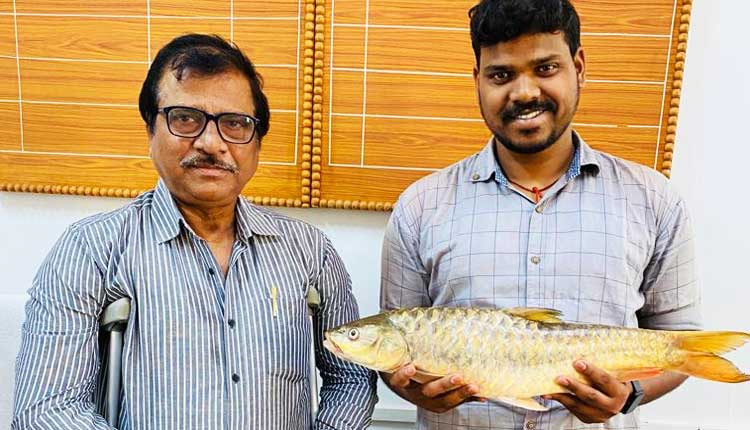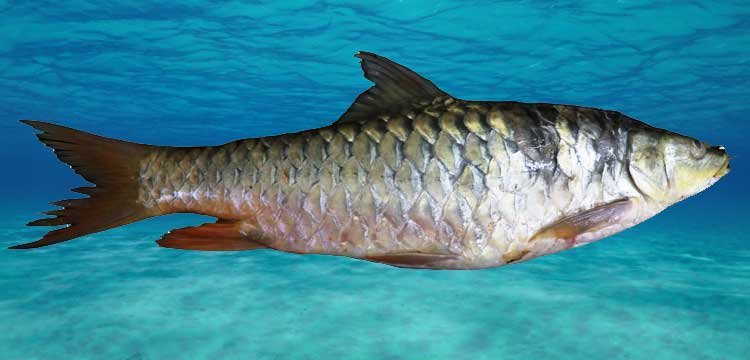Koraput: Researchers from the Central University of Odisha, led by Prof. Sharat Kumar Palita, have recorded two Mahseer fish species, Tor tor and Tor putitora, in the Indravati River system of southern Odisha for the first time.
These species, belonging to the Cyprinidae family, are large-bodied freshwater carps revered as sacred in many Hindu temples and are considered one of the 20 mega fish species of the world.
The discovery resulted from a six-year study initiated by Prof. Palita and carried out by research scholar Alok Kumar Naik, with support from Anirban Mahata. The team identified the species from fish samples obtained at the Indravati Reservoir at Mukhiguda in Kalahandi, Kapur Dam in Nabarangpur, and the Khatiguda market in Nabarangpur. The findings were verified by the Zoological Survey of India (ZSI), Kolkata.
While Tor tor had been previously recorded in rivers like the Mahanadi, Brahmani, and Similipal, its presence in the Indravati River marks a significant discovery. Similarly, Tor putitora—commonly known as the Golden Mahseer—was previously thought to inhabit only the Himalayan foothills and rivers like the Narmada in central India, making this its first recorded presence in the Godavari River system.
Globally, Mahseer species under the genus Tor are known as “True Mahseer,” with 17 species found across countries like India, Nepal, Sri Lanka, and Myanmar. India is home to nine Tor species, four of which—Tor tor, Tor mahanadicus, Tor putitora, and Tor khudree—are now confirmed in Odisha. Locally referred to as “Kainsari” or “Mahasol,” these fish are highly valued for their sporting quality, excellent flesh flavor, and aquaculture potential.
However, Mahseer populations face growing threats from habitat degradation due to untreated sewage, industrial waste, and other human activities. Conservation efforts are increasingly critical, as highlighted by the Government of Odisha’s designation of the Mahanadi Mahseer (Tor mahanadicus) as the state fish.
Prof. Palita stressed the importance of conserving Mahseer species, with genetic analysis of the southern Odisha populations nearing completion. The findings, published in the Asian Journal of Conservation Biology, underscore the rich biodiversity of the Indravati River system. Vice-Chancellor Prof. Chakradhar Tripathi and Vice-Chancellor in-charge Prof. N.C. Panda commended the researchers, emphasizing the alignment of this work with Sustainable Development Goals (SDGs) and its potential to support local livelihoods.

















